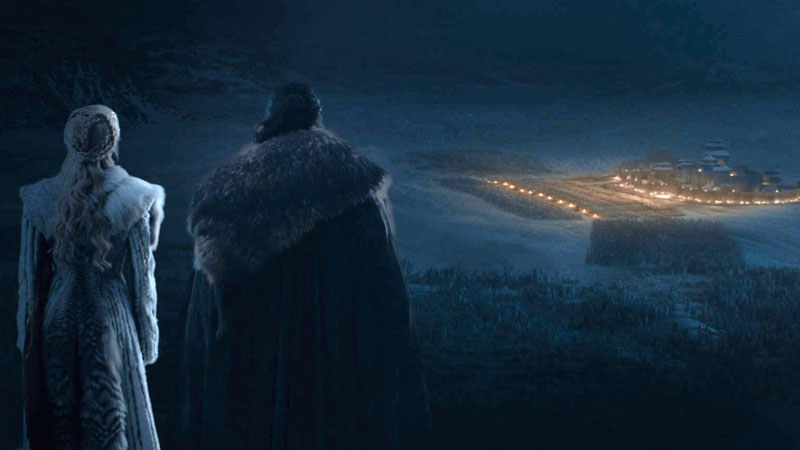
As the director of some of the most dramatic, intense episodes of Game of Thrones, including season six’s “Battle of the Bastards” and season eight’s “The Long Night” and “The Bells”, Miguel Sapochnik is one of the most accomplished directors associated with the show. But he didn’t start off on the showrunners’ good side.
In a detailed, entertaining appearance on IndieWire’s The Filmmaker’s Toolkit podcast, Sapochnik told the story of how he went from a director whose style Weiss and Benioff initially hated to one entrusted with the show’s most pivotal episodes.
After being hired, he explains, problems started while he was shooting his first episode. He went for dramatic, symbolic directorial choices, like shooting Cersei and Tommin through prison-like bars. Benioff and Weiss hated it.
“[Benioff and Weiss] said [it was] ‘so self-conscious and we hate it basically,” Sapochnik explained, which led to a lot of oversight from the showrunners as he learned the leaner, more direct style of direction the showrunners preferred. “I was visually policed for the first three months of my shoot and it made the creation of “Hardhome” really difficult because I pissed them off.”
Challenges further mounted as he had to shoot a battle that was mostly visual effects, and that he was reluctant to fully block out beforehand lest he lose the chance to experiment with the actors on set. He found success, he explains, by limiting the scope of what would need to be pre-designed, placing the White Walkers behind a breaking wall so that he could stage the action around them as organically as possible.
“The problem I have with most action scenes today is they are too designed,” he said. “I can’t shoot this if I can’t create a sustainable environment for my actors to work in. I wanted to create a place, a playground the actors could get so immersed in it that they were in the real thing.”
From that philosophy, the style he would take to later episodes was born.
“The style that evolved from ‘Hardhome,’ that then was used subsequently as we went through the rest of Game of Thrones was born in part out of weird necessity to find a functional and efficient way of shooting,” said Sapochnik. “And at the same time to do it without shaking things up, because that’s what Dan and David did not want.”
Those successes, however, led to a nice surprise: the showrunners, now trusting his vision, allowed him far more room to experiment, question, and play around more, leading to the inventive visual palettes of his later episodes. Earning trust goes a long way.
The whole interview is fascinating, and well worth the listen—you can check it out here. Now if only I could see the action he directed a little bit better in “The Long Night”…
For more, make sure you’re following us on our new Instagram @io9dotcom.




















![[Book Review] The Blade Itself (The First Law Trilogy) by Joe Abercrombie](https://bendthekneegot.com/wp-content/uploads/2018/01/1516047103_maxresdefault-218x150.jpg)
















